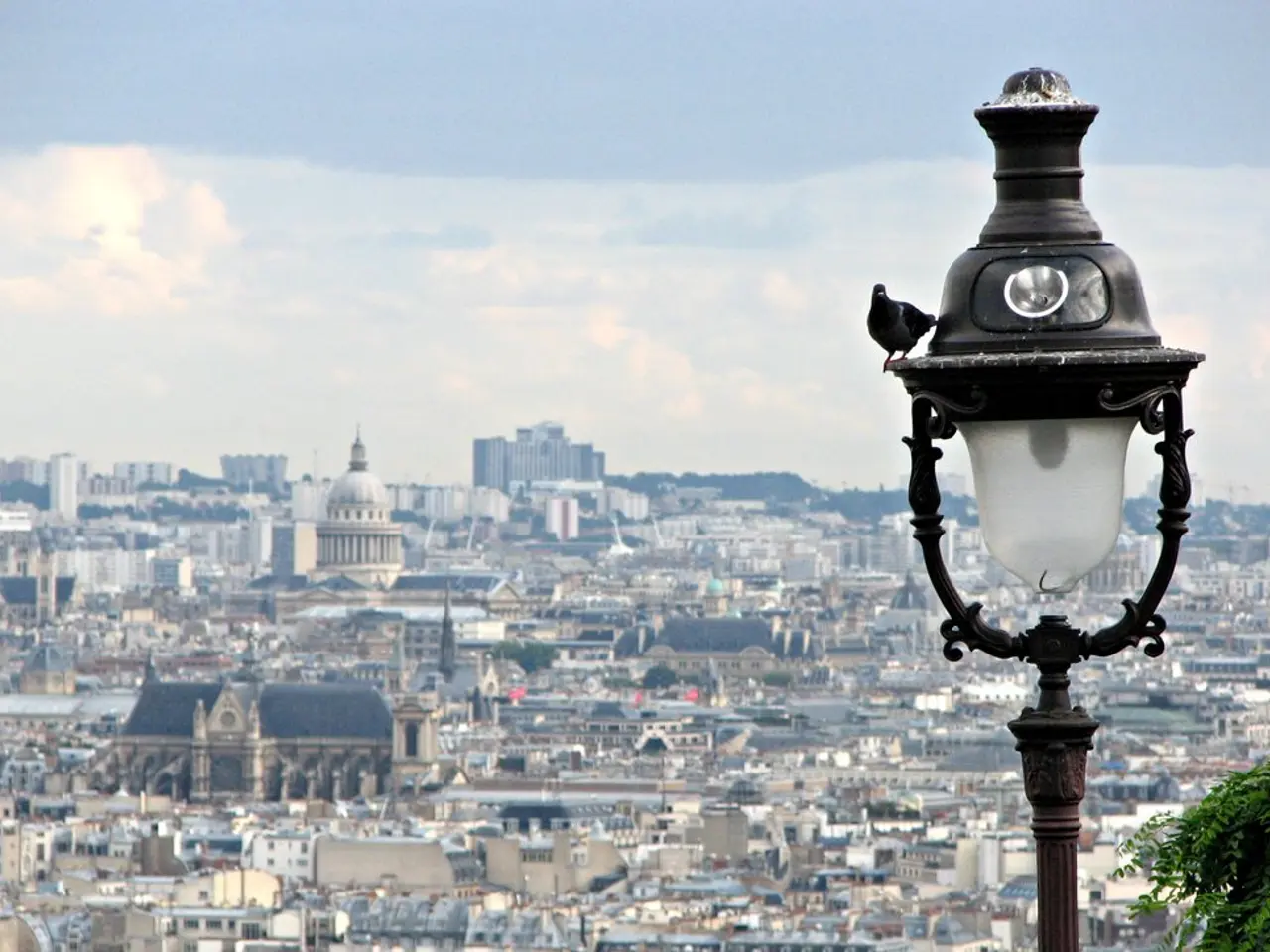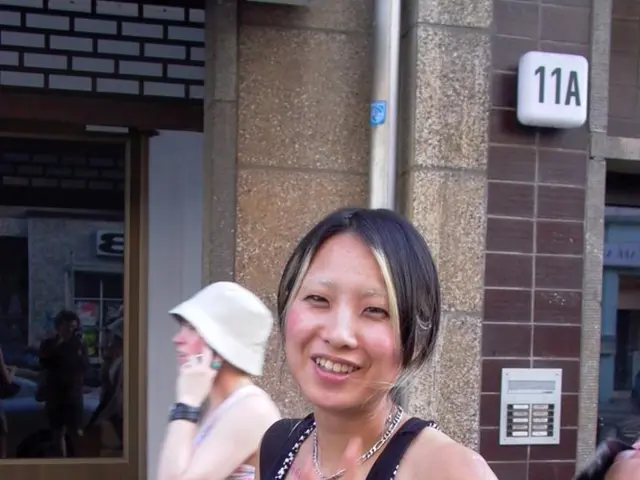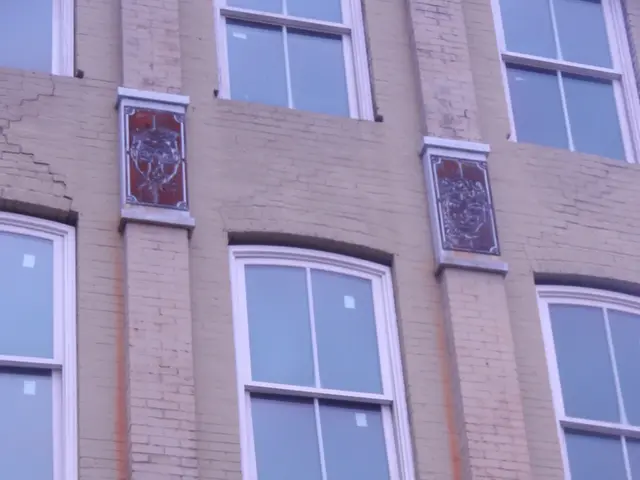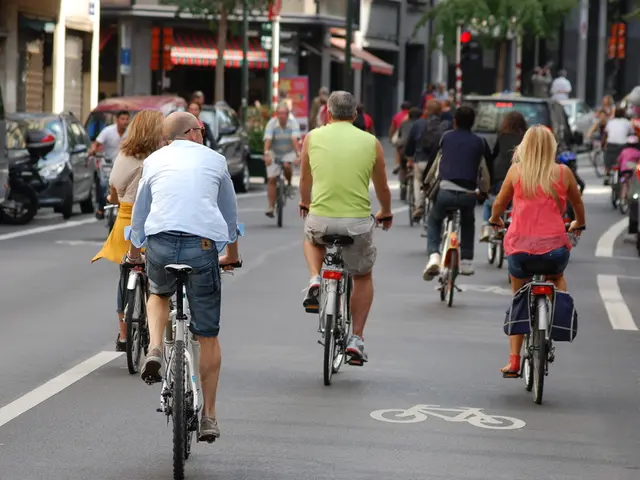Manipulating Public Spaces: The Techniques Used by New York City to Influence Public Behavior
In the heart of New York City, public spaces like Port Authority, Penn Station, Times Square, and The High Line are not just places to pass through, but carefully designed environments that subtly guide human behaviour through a concept known as "soft control." This approach, which uses elements such as spatial layout, seating design, lighting, and materials, is becoming increasingly prevalent in urban design, psychology, and sociology circles.
Port Authority and Penn Station, for example, use design cues to discourage long lingering. Seating is often uncomfortable or spaced apart, while lighting and circulation paths subtly urge people to keep moving rather than loiter. Times Square, on the other hand, attracts tourists and shoppers with open plazas, vibrant lighting, and seating zones that invite short rests but often guide flow toward commercial areas.
The High Line, an elevated park, uses natural elements, seating nooks, and pathway widths to create a rhythm that encourages leisure but also controls crowd density and movement. Each of these spaces, in their unique ways, shapes who is welcome and who doesn't have a place to linger comfortably.
The implications of soft control design are profound. It often privileges visitors, shoppers, and those who fit the economic and social profile desirable to commercial interests or civic beautification goals. Seating and spatial cues discourage prolonged occupancy by homeless or marginalized people, effectively making these groups invisible or pushing them out of view.
The use of hostile or exclusionary design elements intertwined with soft control, like uncomfortable benches or lack of shelter, contributes to social exclusion, making certain groups “disappear” from the public eye despite their presence in the city. This raises critical questions about urban inclusivity and the politics of visibility—who is allowed to occupy these spaces comfortably and who is subtly marginalized or erased by design.
However, it's important to note that soft control in public spaces isn't necessarily malicious; it can make spaces safer, more pleasant, and more functional. For instance, inside the new Moynihan Train Hall, design elements such as airy architecture, polished surfaces, and aggressive lighting create an environment that encourages quick movement and discourages lingering.
Every element in Times Square, including neon billboards, pedestrian barriers, and color-coded lanes, is designed to guide human movement predictably. The design of public spaces serves not only to serve but to steer, exerting quiet influence over how we walk, sit, pause, or leave.
The effectiveness of soft control lies in its invisibility, making it difficult for people to question or protest elements like ambient lighting or the angle of a bench. Yet, the more we notice the quiet cues baked into our sidewalks, plazas, and stations, the more we can reclaim our right to use the city, not just pass through it.
The Port Authority Bus Terminal in New York City has been designed to subtly influence behaviour through the use of classical music as a deterrent, with hidden speakers playing music at a volume just shy of irritating. This practice, while not unique to New York, highlights the extent to which soft control can be integrated into our everyday environments.
In conclusion, soft control in New York City’s iconic public spaces orchestrates behaviour through design to balance commercial, social, and aesthetic goals. However, it is crucial to remain vigilant and question the design of our public spaces, ensuring they remain truly public, allowing people to stop, stay, and exist, and sometimes, be a little out of place.
- The concept of soft control, evident in New York's public spaces like Port Authority and Penn Station, is gaining traction in urban design, psychology, and sociology spheres.
- Seating areas in The High Line are designed with leisure in mind, yet they control crowd density and movement, subtly guiding visitors.
- Times Square's design appeals to tourists and shoppers, encouraging short rests and guiding flow towards commercial areas.
- Soft control design can inadvertently create a sense of exclusivity by discouraging prolonged occupancy by marginalized groups.
- Lack of shelter and uncomfortable benches are examples of hostile or exclusionary design elements integrated with soft control.
- The Moynihan Train Hall, with elements like airy architecture and aggressive lighting, encourages quick movement and discourages lingering.
- Each element in Times Square serves a dual purpose: it serves and also steers, subtly influencing human behavior.
- The subtle cues in public spaces, such as ambient lighting and the angle of a bench, are difficult to question because of their invisibility.
- The classical music played in the Port Authority Bus Terminal is an example of how soft control can be integrated into our everyday environments beyond New York City.




